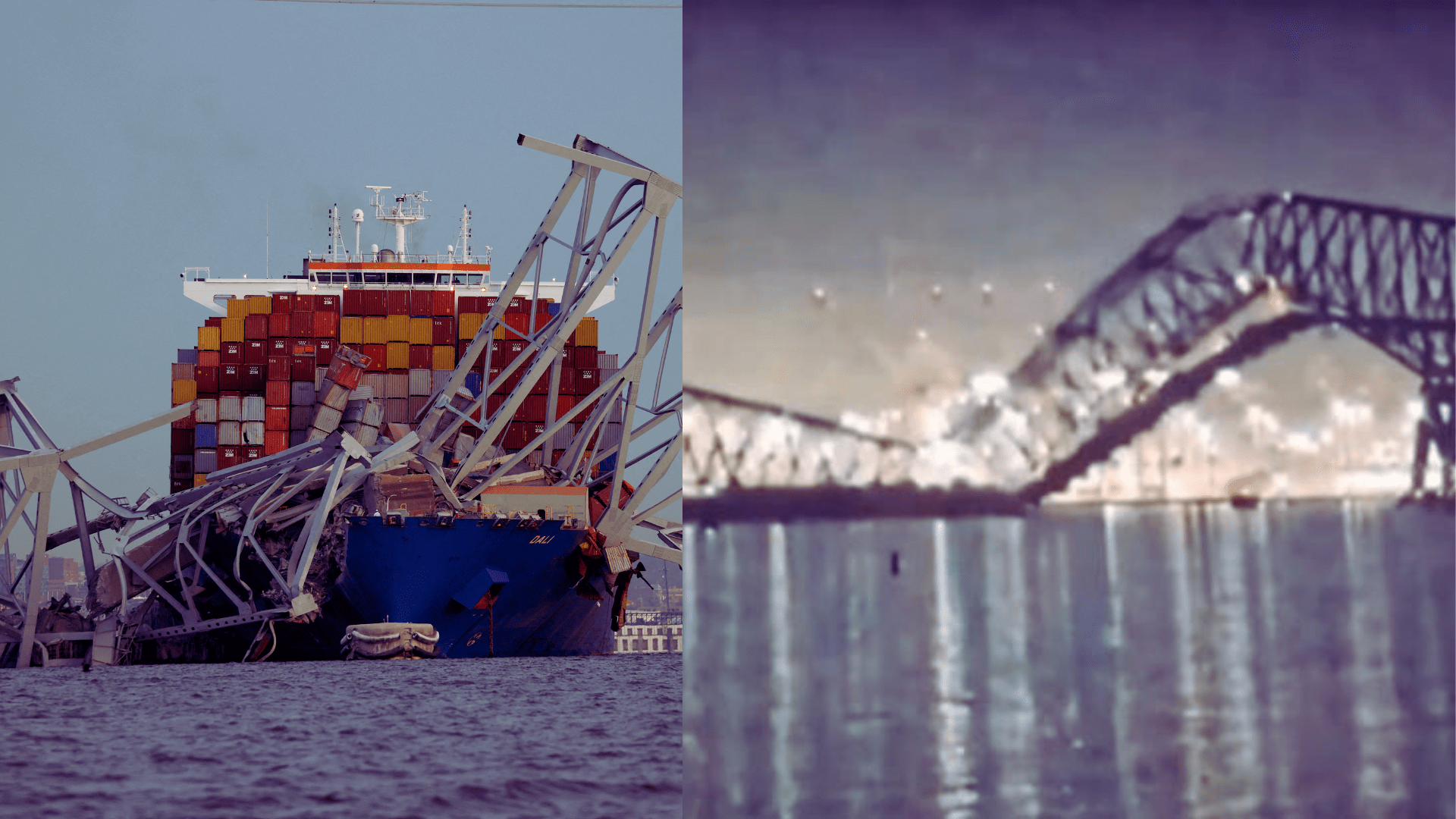In the early hours of March 26, 2024, an unprecedented disaster struck the city of Baltimore, Maryland, fundamentally altering its landscape and impacting its bustling port operations. The Francis Scott Key Bridge, a vital artery for the transportation of goods and people along the U.S. Eastern Seaboard, experienced a catastrophic failure following a collision with a massive cargo ship, the Dali. This article delves into the immediate consequences of this disaster, the heroic responses in its aftermath, and the broader implications for Baltimore and the global supply chain.
A Sudden Catastrophe
Shortly after 1:30 a.m., as the city slept, the Dali, laden with containers and measuring a staggering 948 feet in length, encountered a critical power failure. Despite emergency procedures, including the dropping of anchors, the vessel collided with a pillar of the 1.6-mile-long bridge. This led to the collapse of vast metal spans into the Patapsco River, sending vehicles and potentially their occupants plummeting into the icy waters below.
Maryland Governor Wes Moore highlighted the timely Mayday call from the ship, which allowed officials to halt bridge traffic, undoubtedly saving lives. However, with eight individuals reported on the bridge at the time of the collapse, six remained unaccounted for in the hours following the incident.
The Response
Rescue efforts were immediate, with two survivors pulled from the waters; one was hospitalized. The search continued for others, amidst the twisted wreckage and submerged vehicles detected by sonar. State and federal agencies, including the U.S. Coast Guard, launched an intensive search and rescue operation, underlining the severity of the disaster.
Impact and Implications
The closure of the Francis Scott Key Bridge, and the subsequent suspension of ship traffic at the Port of Baltimore, reverberates far beyond the immediate area. As the busiest U.S. port for automobile shipments and a major hub for coal exports, the incident threatens significant disruptions to the global supply chain. Delays, increased costs, and logistical challenges loom, potentially affecting a wide range of commodities from vehicles to coal, sugar, and more.
Investigative Efforts
Authorities swiftly initiated a preliminary investigation, which thus far suggests the incident was an accident. Historical data reveals that the same vessel was involved in a prior accident in 2016, further complicating the narrative.
A Community in Shock
The collapse has not only disrupted physical infrastructure but has also left an indelible mark on the community. Baltimore Mayor Brandon Scott described the aftermath as resembling a scene from an action movie, a sentiment echoed by locals who witnessed the chaos.
Looking Forward
The tragedy of the Francis Scott Key Bridge collapse calls for a thorough examination of maritime and infrastructure safety protocols. It serves as a stark reminder of the vulnerabilities in our critical infrastructure and the need for robust, proactive measures to prevent future disasters.
As the community reels from this devastating event, and as investigations continue, the focus turns to recovery, rebuilding, and preventing such tragedies in the future. The resilience of Baltimore and its people will undoubtedly be tested, but through collaborative efforts, a path forward will emerge, marked by strengthened safety measures and a renewed commitment to infrastructure resilience.
Read also: What is a Black Swan Event?




